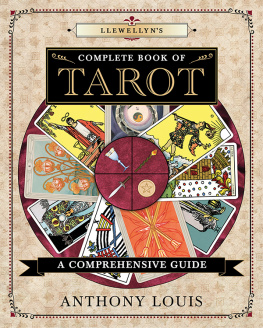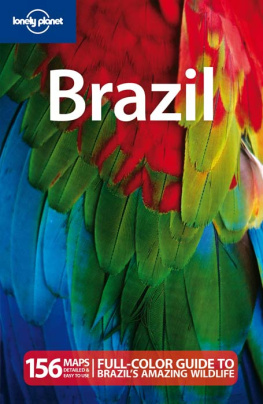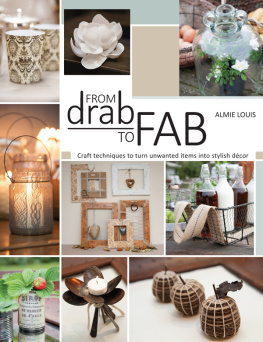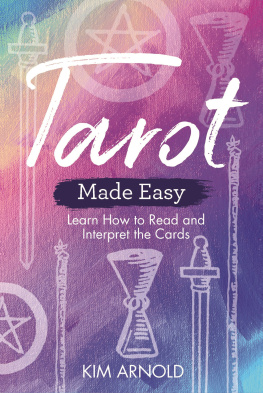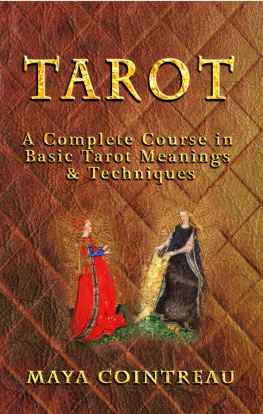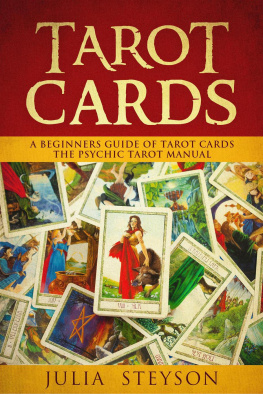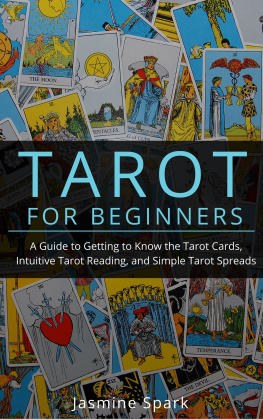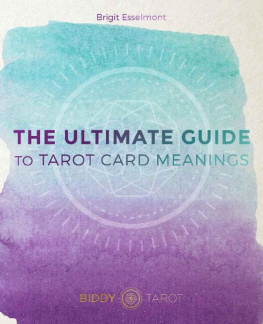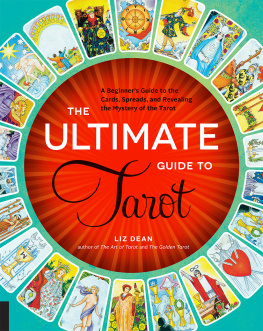Anthony Louis (Conn.) is a physician and psychiatrist. Astrology has been his avocation for more than thirty years. He has lectured internationally on horary astrology and has published numerous articles in magazines such as American Astrology , The Mountain Astrologer , and The Horary Practitioner .

Llewellyn Publications
Woodbury, Minnesota
Copyright Information
Llewellyns Complete Book of Tarot: A Comprehensive Guide 2016 by Anthony Louis.
All rights reserved. No part of this book may be used or reproduced in any matter whatsoever, including Internet usage, without written permission from Llewellyn Publications, except in the form of brief quotations embodied in critical articles and reviews.
As the purchaser of this e-book, you are granted the non-exclusive, non-transferable right to access and read the text of this e-book on screen. The text may not be otherwise reproduced, transmitted, downloaded, or recorded on any other storage device in any form or by any means.
Any unauthorized usage of the text without express written permission of the publisher is a violation of the authors copyright and is illegal and punishable by law.
First e-book edition 2016
E-book ISBN: 9780738750033
Book design by Bob Gaul
Interior card images: Classic Tarot 2014 by Llewellyn Publications with art by Eugene Smith and text by Barbara Moore
Cover design by Lisa Novak
Cover images: iStockphoto.com/64726409/PeterHermesFurian; iStockphoto.com/10620241/narcisa; iStockphoto.com/56232750/Digimann; The Magician, The Fool, The High Priestess and The Hermit cards from the Rider-Waite Tarot Deck, known also as the Rider Tarot and the Waite Tarot, reproduced by permission of U.S. Games Systems, Inc., Stamford, CT 06902 USA. Copyright 1971 by U.S. Games Systems, Inc. Further reproduction prohibited. The Rider-Waite Tarot Deck is a registered trademark of U.S. Games Systems, Inc.; The 6 of Cups, 3 of Wands and 2 of Discs cards from the Thoth Tarot reproduced by permission of Ordo Templi Orientis; The Tower and 10 of Swords cards from Ancient Tarot of Marseilles reproduced by permission of Lo Scarabeo.
Editing by Laura Graves
Interior illustrations by Llewellyn Art Department
Llewellyn Publications is an imprint of Llewellyn Worldwide Ltd.
Library of Congress Cataloging-in-Publication Data
Names: Louis, Anthony, 1945 author.
Title: Llewellyns complete book of tarot : a comprehensive resource /
Anthony Louis.
Description: first edition. | Woodbury : Llewellyn Worldwide, Ltd, 2016.|
Includes bibliographical references.
Identifiers: LCCN 2016008864 (print) | LCCN 2016013038 (ebook) | ISBN
9780738749082 | ISBN 9780738750033
Subjects: LCSH: Tarot.
Classification: LCC BF1879.T2 L6825 2016 (print) | LCC BF1879.T2 (ebook)|
DDC 133.3/2424 dc23
LC record available at http://lccn.loc.gov/2016008864
Llewellyn Publications does not participate in, endorse, or have any authority or responsibility concerning private business arrangements between our authors and the public.
Any Internet references contained in this work are current at publication time, but the publisher cannot guarantee that a specific reference will continue or be maintained. Please refer to the publishers website for links to current author websites.
Llewellyn Publications
Llewellyn Worldwide Ltd.
2143 Wooddale Drive
Woodbury, MN 55125
www.llewellyn.com
Manufactured in the United States of America
Dedication
In New York City a young man carrying a musical instrument stops an elderly woman and asks, Excuse me, maam, how do I get to Carnegie Hall?
The lady looks him straight in the eye and responds, Practice, practice, practice!
This book is dedicated to all who are seeking a way to Carnegie Hall.
Contents
Chapter : Why Learn the Tarot?
Chapter : Where Did the Tarot Come From?
Chapter : Will the Real Tarot Please Stand Up?
Chapter : Deciding How to Use the Cards
Chapter : Associations and Correspondences
Chapter : Reversals and Dignities
Chapter : How to Ask a Question of the Tarot
Chapter : How to Read What Is Written in the Cards
Chapter : Laying Out the Cards to Do a Reading
Chapter : The Major Arcana
Chapter : The Numbered Pip Cards
Chapter : The Court Cards
Preface
W hen Llewellyn first contacted me about writing this book, I was delighted and a bit daunted. The acquisitions editor, Barbara Moore, explained that her company had a series entitled The Complete Book of and was seeking an author for their Complete Book of Tarot . The word complete provoked a twinge of anxiety. Over the years I have run into tarot enthusiasts who have amassed more than a thousand books and an equally stunning number of tarot decks for their collections! How could a single book call itself complete when measured against such a vast landscape? Clearly, some decisions about content had to be made.
After mulling the issue over, I came to the following resolution. This book would follow certain principles to offer a complete and even-handed approach in the space of a single volume. To achieve this goal, I established the following guidelines:
- The book would cover the essential topics that someone new to tarot should know. The focus would be on a tarot core curriculuma term that has become both popular and reviled in contemporary news about American education.
- The material covered would be based on established traditions in tarot literature. To this end, I would cite the works of such tarot giants as Etteilla (Jean-Baptiste Alliette), the French occultist whose writings first popularized tarot in Europe; S. L. MacGregor Mathers of the Hermetic Order of the Golden Dawn; Arthur Edward Waite, intellectual father of the influential Rider-Waite-Smith deck; and Aleister Crowley of the Thoth tarot deck.
- For easy reference, the text would be concise and to the point and would include a detailed table of contents to enable readers to search easily for topics of interest.
- More obscure and esoteric aspects of tarot would be mentioned only in passing. Readers would be referred to other texts to pursue specialized topics in further
detail. - To avoid rehashing what can be found in currently available texts, this book would present the core material in a fresh and interesting manner.
- Because the tarot is the product of the Italian Renaissance, this book would include the Christian cultural influences on tarot symbolism that many authors omit. In addition, it would discuss the symbolic use of the Hebrew alphabet, which was crucial to the Golden Dawns method of delineating the major arcana (the twenty-two allegorical picture cards of the traditional tarot deck).
- Because the Hermetic Order of the Golden Dawn had such an overwhelming influence on modern tarot interpretation at the end of the nineteenth century, this book would follow the Golden Dawns astrological correspondences for the cards.
- Tarot readers come from many different backgrounds and have diverse worldviews, so this book would seek to be as objective and nonjudgmental as possible.
- Because it can be difficult for a sole author to remain objective, I would label my personal opinions as such. For example, I regard the modern use of the tarot as a form of divination (an attempt to communicate with the gods) but with the important caveat that the gods help those who help themselves. Readers should be aware that I am assuming this point of view.

